The first textile flags appeared in Europe in times of invasions of the Huns and the Avars.
Their role was, above all, functional at that time. Dukes and princes had spears which were the original symbols of their power.
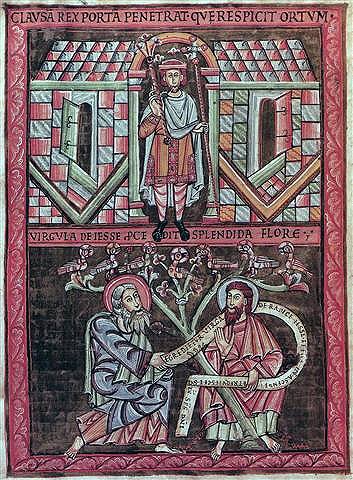
HISTORY OF THE FLAG - PREMYSLID
After the decline of the Great Moravian Empire, Bohemia of the Premyslid dynasty became the centre of power.
During that period, an image of a monarch with a spear appears on denars of prince Spytihnev II (1055-1061), king Vratislav II (1061-1092), and Borivoj II (1100-1107). The spear there is the only object held in the monarch’s right hand.
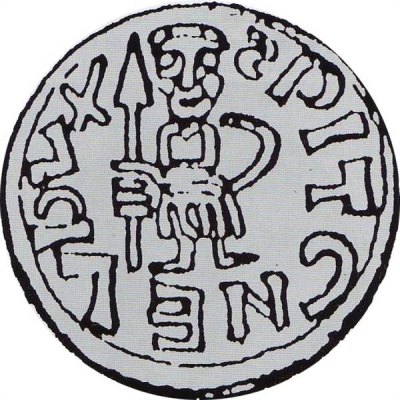
Flags of the gonfanon type emerged already on denars of Bretislav I (1053-1055), Jaromir, Vratislav II, and Vladislav II (1140-1173), also in various illuminated manuscripts or on prince and kings’ seals, and especially on images of St. Wenceslas, the patron saint of the Czech country.
Vratislav, the Czech king, with the king’s three-tailed gonfanon
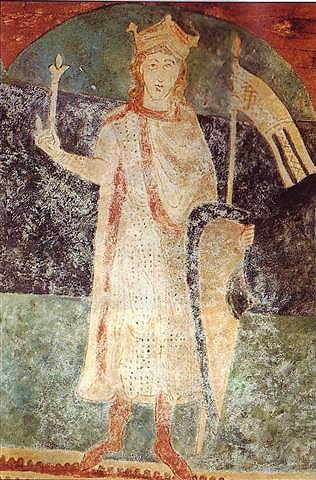
Premyslid prince with the prince’s two-tailed gonfanon copy of wall paintings in the Rotunda of St. Catherine in Znojmo, before 1142
The colour of the flags is documented only during the reign of Vladislav II when pink flags fluttered above his troops in the battle of 1142 against Konrad, the prince of Moravia. Other princes of the empire had St. Wenceslas’ eagle on their flags (its first image dates back to 1192 when it appeared on the seal of the prince royal, Premysl, later king Premysl Otakar II).
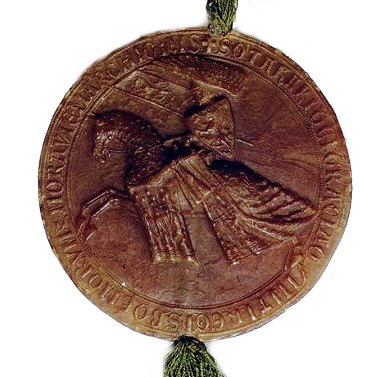
In 1247 Premysl Otakar II, as a margrave of Moravia, adopted the emblem of the double-tailed lion.
Both symbols – the eagle and the lion – were used in our country simultaneously during the first half of the 13th century. The ruling monarch used the flamy St. Wenceslas’ eagle as a symbol of the country, while the double-tailed lion represented the emblem of the dynasty, expressing the relation to the large Premyslid family.
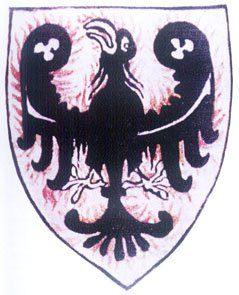
shield with the flamy St. Wenceslas’ eagle
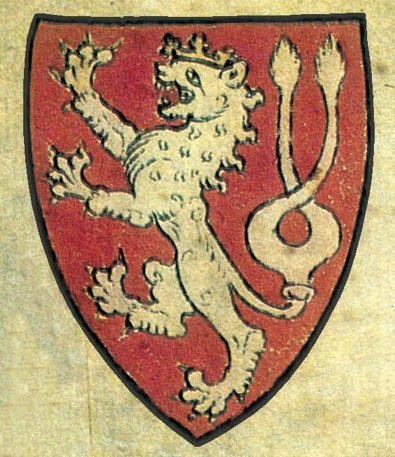
shield with the Czech lion
HISTORY OF THE FLAG - HABSBURGS
During the times of the Thirty Years’ War, there appeared flags on long poles as we have known them ever since.
Typical flags for infantry of the Habsburg army were of the three-side shape with a flamy edging. Until 1743, there was no rule or regulation specifying the particular design. Troops recruited or paid in our country used red military flags with the double-tailed lion.
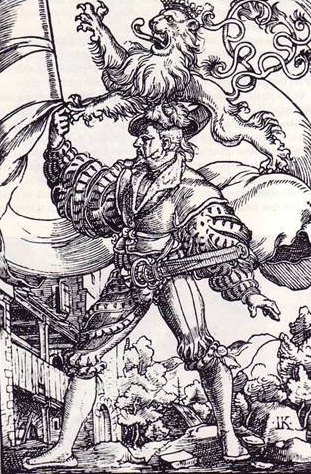
military infantry flag with the Czech lion from the period of 1627 to 1637. The Swedes captured it during the times of the Thirty Years’ War and it is exhibited in the Army Museum in Stockholm.
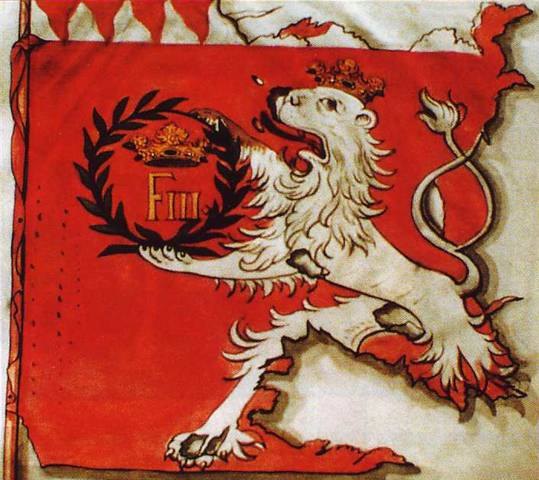
During the reign of Maria Theresia (1743 to 1745) when the ever more powerful Prussia strived to push the Habsburgs out of the influence over the European events, new flags and standards were introduced bearing shields with emblems of the country. During the wars against the French Revolution and against Napoleon, the volunteers of legions of the Czech Kingdom swore on their own white and red flags.
From the 18th century, the shield with the crowned Czech lion was overtopped by the St. Wenceslas’ crown. This meant the unification of all countries of the Czech crown.
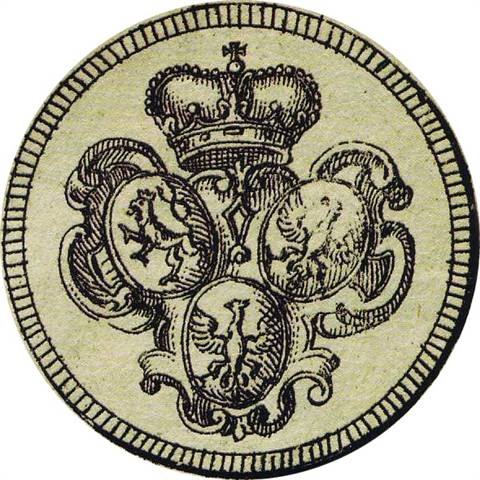
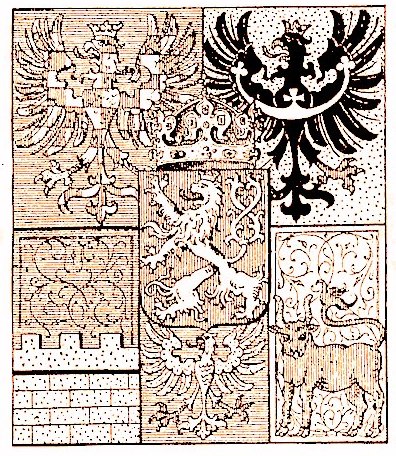
Czech royal emblem overtopped by the St. Wenceslas’ crown in the meeting hall of the Chamber of Deputies of the Czech Republic from 1860s.
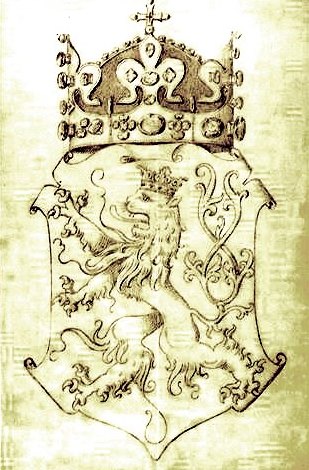
From the revolution of 1848, the Czech country symbols were considered Czech national symbols. The original country flag consisted of two equally sized stripes – an upper white one and a lower red one. These were derived from the silver double-tailed lion on a red field.
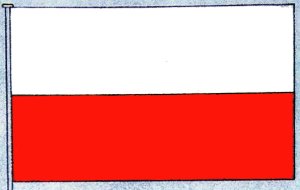
HISTORY OF THE FLAG - AFTER A YEAR 1914
After the breakout of the First World War in 1914, Czech legions were formed with almost one hundred soldiers. Flags of legions’ regiments were white and red with embroidered symbols of the Czech countries and Slovakia, linden twigs, St. Wenceslas’ crown, letters “ S”, and Hussite themes.
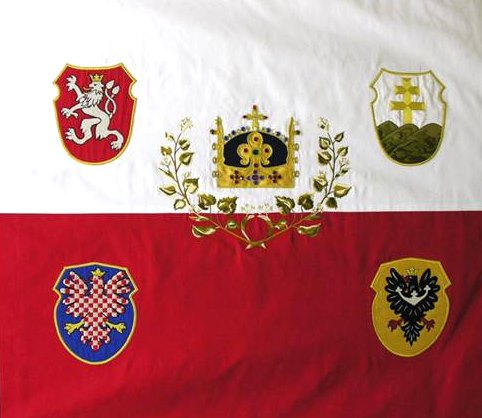
flag of the 1st Shooting Regiment of the Russian legions (originally a Czech group) from 1917
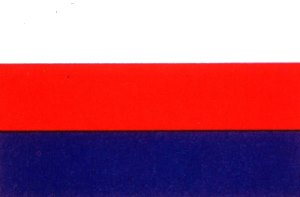
flag of Russian legions
The reverse side of the Russian legion’s flag showed national colours for the Russian command, and Czech and Slovak colours for the Czechs and Slovaks.
The National Council of Czechoslovakia in exile (which led the anti-Austrian resistance) became the interim government on 26 September 1918 with the consent of France, Great Britain, and the USA.
The first ceremonial hoisting of the Czechoslovak flag on the house inhabited by T. G. Masaryk, the head of the interim government, took place on 18 October 1918. Based on the historical flag of Bohemia, the Czechoslovak flag was defined as the connection of two stripes, i.e. a white one above a red one.
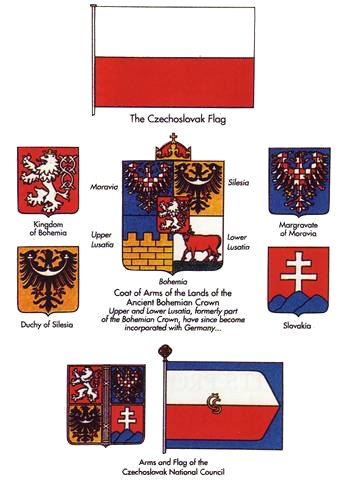
The independent Czechoslovak state was established on 28 October 1918.
The formation of independent Czechoslovakia brought about the necessity to have a new representative state symbols, especially a national emblem and a flag. The official flag of the white and the red colours resembled too much the Polish but also the Austrian ones. The main reason was the fact that these colours did not express enough the connection of the historical countries with Slovakia. The extension of the number of official colours was to be reflected in the design of the flag.
The new design of the Czechoslovakian flag was adopted on 30 March 1920.
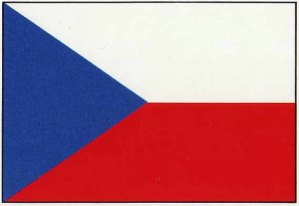
original design with a triangle reaching one third of the flag length was made by J. Kursa in May 1919; the triangle was later lengthened up to one half of the flag length
...
Since 1920, this square flag has had the complete large emblem. It included heraldic symbols of all parts of the republic and demonstrated territorial claims of the Czechoslovak Republic (CSR).
Protectorate of Bohemia and Moravia
The Munich Agreement of 29 September 1938 determined the fate of Czechoslovakia. A part of our land was seized and Czechoslovakia was changed to Czech-Slovakia with the autonomy of Slovakia and the Subcarpathian Ruthenia.
The Slovak state was established on 14 November 1938.
The Protectorate of Bohemia and Moravia was formed by the Nazis on 15 March 1939. The flag of the protectorate was hung out together with the Nazi imperial one which had the preferential status.

National flag during the Protectorate of Bohemia and Moravia
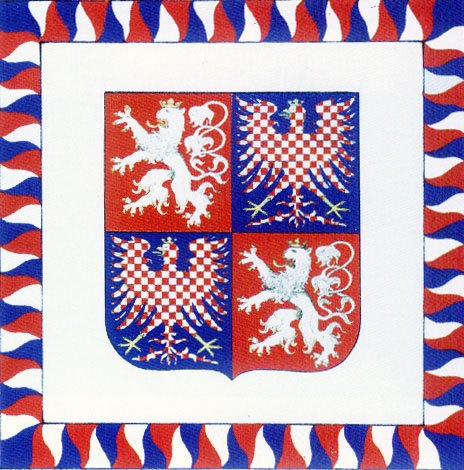
Changes were also made to the President’s flag.
Heraldic symbols of the Czech Republic after 1989
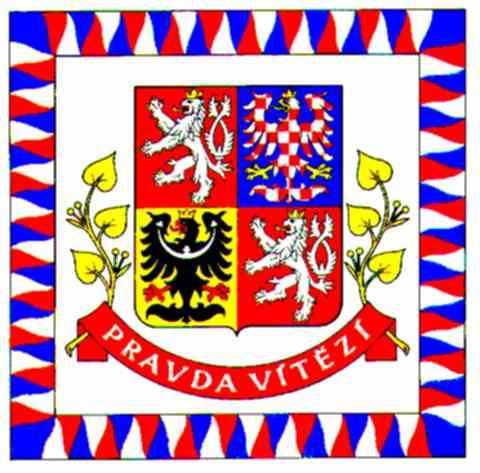
The President flag
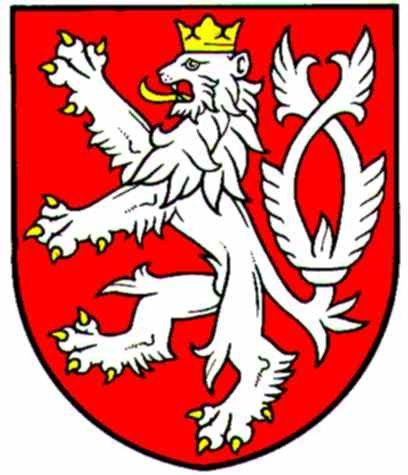
The small National emblem Czech lion
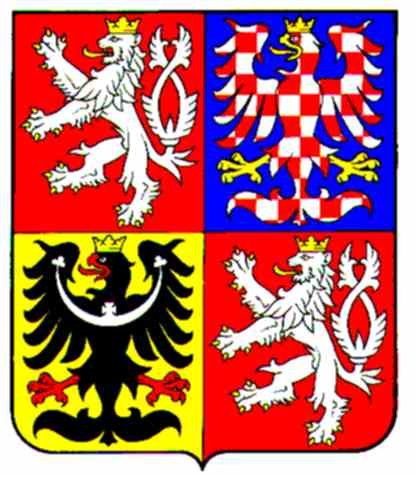
The National emblem of Czech Republic
...
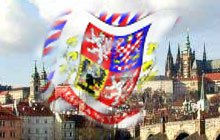
(c) copyright CZECHANTIQUEART 2007
